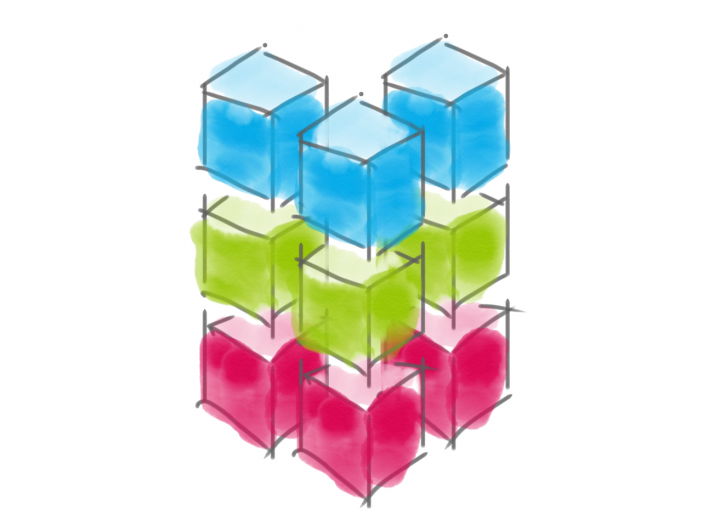
Micro Frontends
The level of complexity and architecture of web applications these days can be very high. This makes it all the more important that they remain manageable from an organisational point of view.
Micro front ends are one solution for this. They group a related context vertically, i.e. from the presentation view in the front end to the persistence in the database.
Generally speaking, one team is responsible for the implementation of each of these functional units. That means several autonomous teams can work in parallel on the web application.
Micro front ends have much in common with micro services, but focus on the front end rather than the server side. There are two things in particular to consider in this process: the organisation of the teams and the architecture of the front-end application.
In terms of organisation, it is important to achieve a clean, professional cut between the functional aspects, so that a team can develop and release a new version at any time, independently of the features. For operation, we have experts from IT operations (ITO) at our side, who ensure the availability of the services. And that in particular is simpler for large applications with micro front ends than in a scenario with a monolithic approach: the architecture makes it possible to develop technically decoupled use cases with the help of polyglot technologies. The individual features can thus each be implemented with different technologies.
For the most part, teams only work on self-contained, i.e. technically decoupled, parts of the application. The integration of the individual front-end applications takes place in a separate step and brings together the individual applications in such a way that a single application is created from the point of view of the user.In summary, we can see that: micro front ends reduce the complexity of the whole by grouping technically closely connected use cases. That is the foundation for independent releases and the basis for better exchangeability in future.

